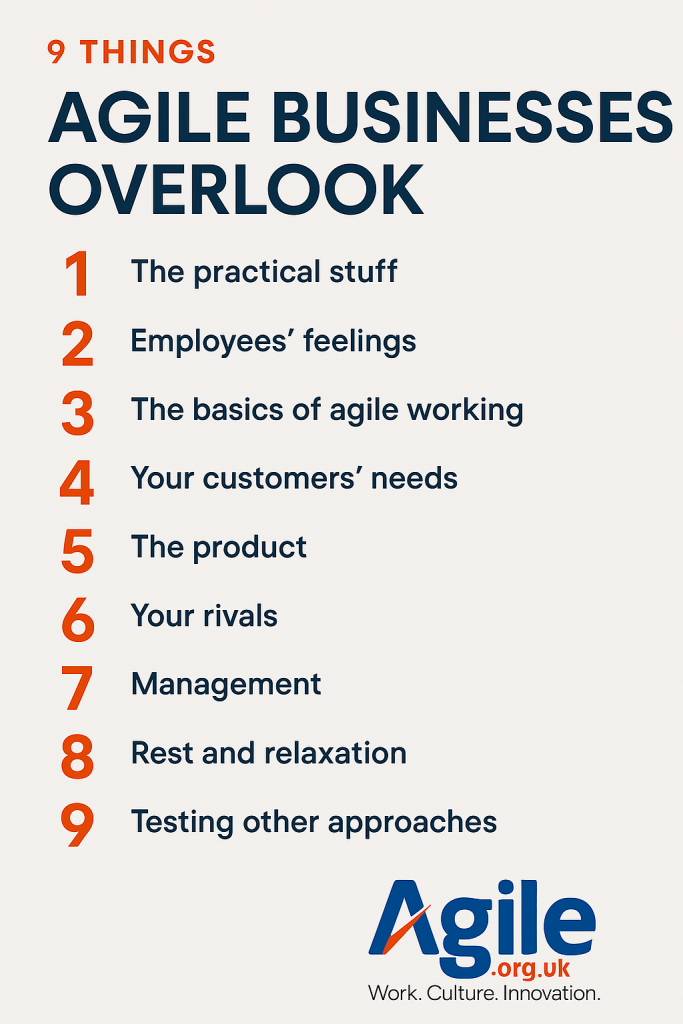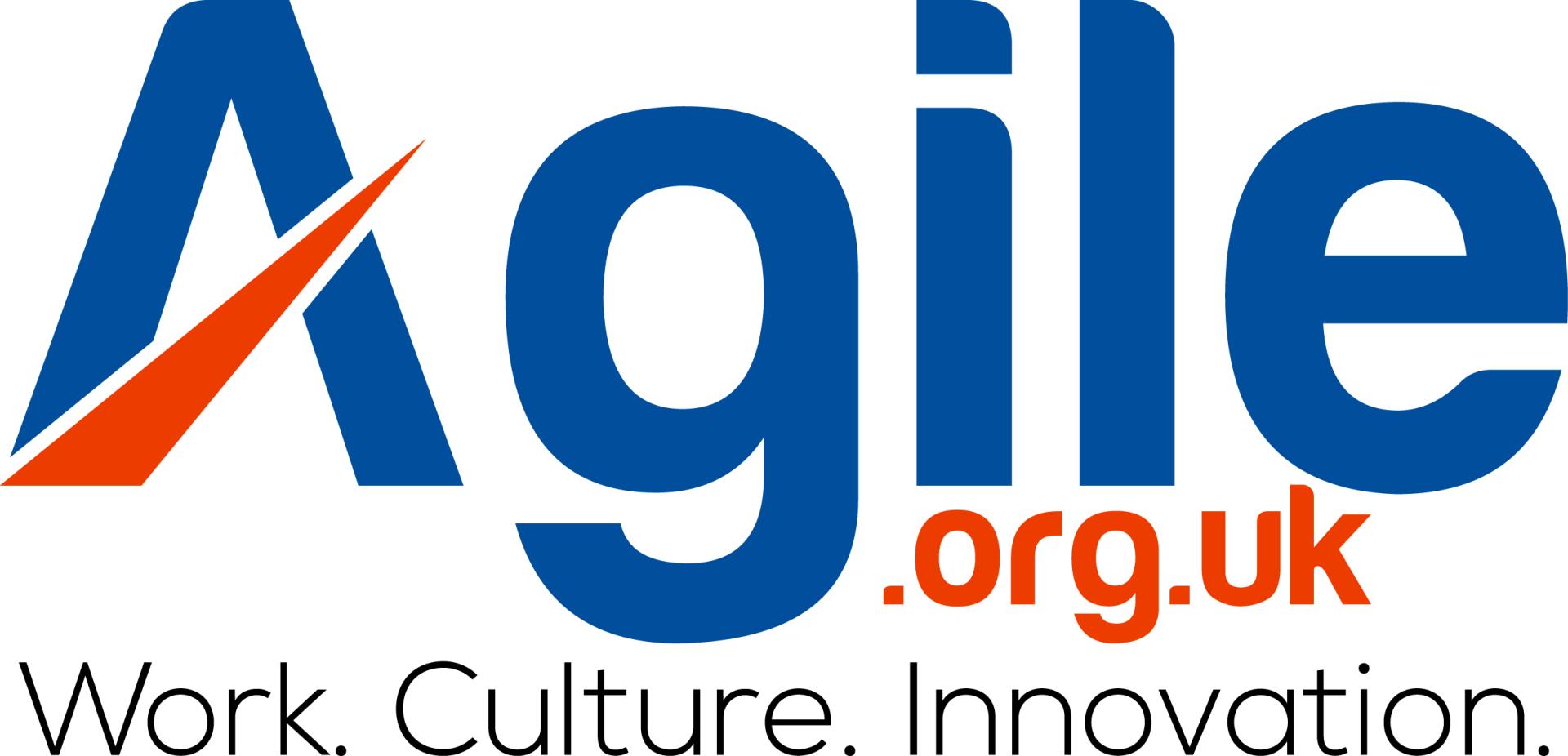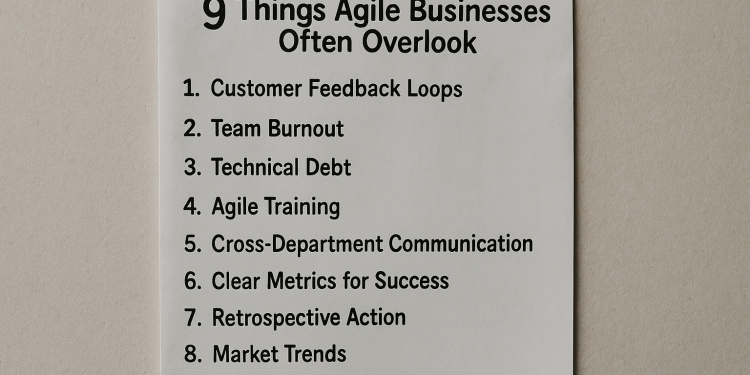When you’re in the giddy first stages of setting up your agile methodologies and frameworks, it can be easy to get caught up in the moment and forget to check some of the essentials.
Such feelings are natural; setting up a new business is exciting, after all, and it’s reasonable that you would want to move as fast as you can.
Still, agility is all about efficiency and flexibility, and you can’t be efficient or flexible if you leave some of the fundamentals behind. Here are 9 things agile businesses often overlook.

1. The practical stuff
It’s too easy for entrepreneurs to get swept up in the idea of being an entrepreneur and not the realities of the situation.
As such, many business owners often forget to take care of the practical stuff; they don’t dot the i’s and cross the t’s, so to speak, and an inefficient business often follows, which is anathema to agile practices.
Don’t forget to figure out things like your supply chain and storage methods for products; you can use services like Körber’s WMS to take care of the tough stuff, leaving you to handle the parts of the business you find most appealing.
2. Employees’ feelings
When you’ve got an exciting new idea for your business, it can (unfortunately) be easy to leave others in the lurch due to your excitement.
If you’ve got a full contingent of staff, it’s very important to consult them and find out how they’re feeling about your transition to agile practices. Are things working for them? Is there anything they’d change?
You may find that their ideas don’t quite gel with your own, but by speaking with your staff and working things out, you can arrive at a satisfying compromise for everyone.
3. The basics of agile working
Agile methodologies are all well and good, but if you don’t actually know what you’re implementing, then “agility” is nothing more than an empty phrase.
It’s important to read up on the basics of agile working before you decide to implement this framework into your own business, because if you don’t, you won’t know what you’re getting yourself into.
Make sure “agile” isn’t just a buzzword for you and your business; it should be a new way of working, a new philosophy for you and your coworkers to adapt and work through together.
4. Your customers’ needs
Customers are at the centre of everything that agile working represents. Without knowing what your customers want from you, it’s going to be very hard to become an agile business.
Make sure that at every step of the way, you’re liaising with your customers, talking through their needs, and noting down any worries or criticisms they may have. They’re the most important element of the company, after all!
You shouldn’t be afraid of negative feedback, either. Every business is going to receive it at some point, and part of becoming an agile company is figuring out where your weaknesses lie.
5. The product
We know, we know – it sounds unlikely that an agile company would truly forget that their product is one of the most important elements of their business, but it can happen a lot easier than you think.
When you’re swept up in the day-to-day running of your business, it can be easy to forget simple core tenets like “the product is everything”, but agile working depends on having a strong product that’s easy to recommend.
Perform regular checks to make sure that your product is just as solid as it was the day you founded your business. That way, you won’t need to worry that the core of the company is wobbling.
6. Your rivals
Sure, you might be caught up in the excitement of creating an agile framework for your business, but agility isn’t just for your company; it’s being adopted by businesses around the world.
That’s why it’s important to keep an eye on what your rivals are doing as well as what you’re doing. See what kind of steps they’re taking to implement their own agile frameworks and what you could learn from that.
Every good business owner sees rivals as opportunities rather than enemies, and agile frameworks allow for doing so even more thanks to their modular, flexible structure.
7. Management
It’s true that agile structures don’t need quite as much managerial oversight (some might unkindly say “interference”!), but that doesn’t mean no management whatsoever is required.
It’s tempting to just leave teams to do whatever they like as an agile business owner, but the fact is that some guidance and direction is necessary, even for agile teams working on modular projects.
Make sure that managers are checking in with teams on a semi-regular basis; just don’t schedule hundreds of meetings a week to check up on how things are going. Agile teams hate that.
8. Rest and relaxation
Just like any other business, an agile business needs time to breathe and think, and so do its employees. It’s no good tasking your staff with working around the clock just to get a project finished.
Agile frameworks allow for periods during which your employees aren’t pushing themselves to go all-out, and studies also show that employees work better when they take regular breaks.
You might be tempted to think that adopting agile methodologies means you can work harder for longer, but don’t neglect the all-important breaks and rest in between!
9. Testing other approaches
Some businesses just don’t gel well with the concept of agile frameworks. For one reason or another, your business might just not be a good fit for agile, and that’s okay.
Rather than bending over backwards trying to fit agile into your business’ operations, it’s more important to test other approaches and methodologies to see if they work better for you.
A business is, after all, in a constant state of evolution, and if you’re working too hard trying to make a square peg fit into a round hole, then you’re not evolving!













